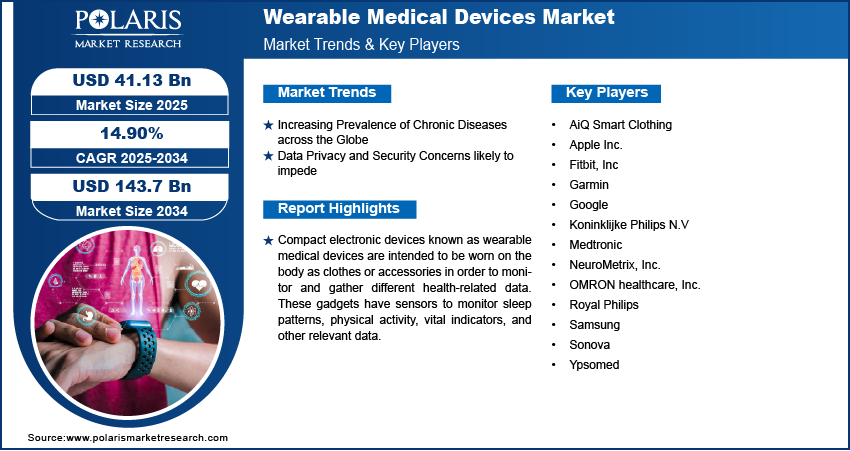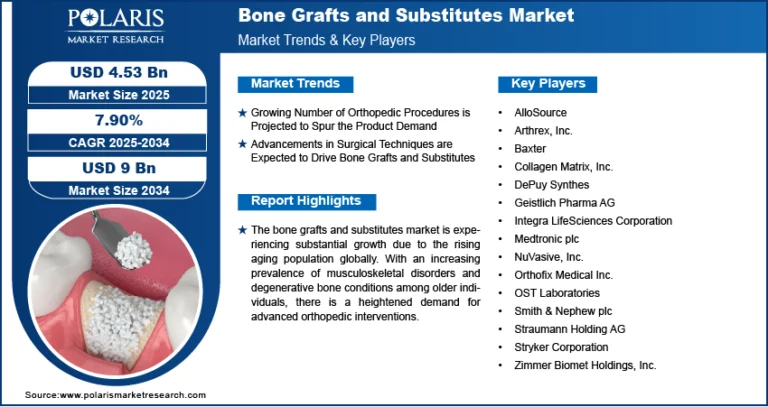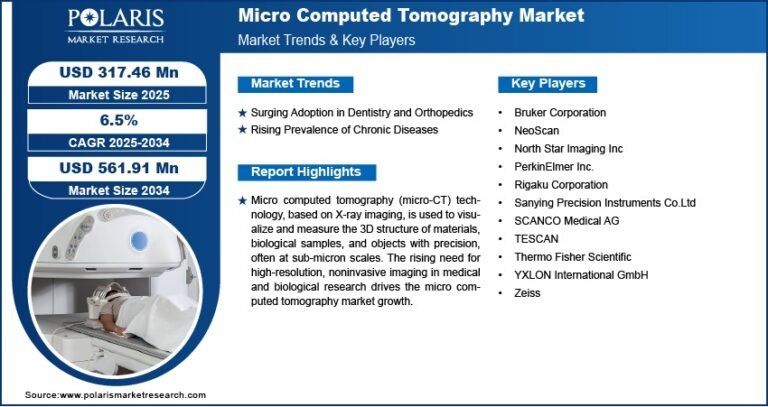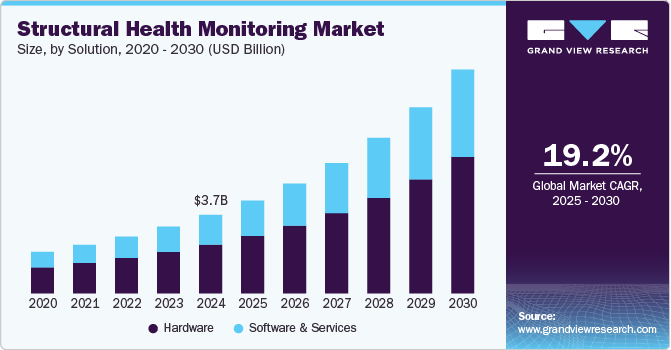Wearable Medical Device Market is projected to grow to USD 143.7 billion by 2034, at a CAGR of 14.90%.

The global wearable medical devices market was valued at USD 35.8 billion in 2024 and is forecasted to grow at a CAGR of 14.90% from 2025 to 2034. The market is growing due to rising health awareness and technological advancements in health monitoring.
Wearable Medical Devices Market Trends & Insights:
- Rise of Continuous Health Monitoring: Devices that monitor heart rate, glucose, oxygen saturation, and sleep patterns in real time are becoming mainstream.
- Integration with AI and IoT: Smart wearable devices are increasingly connected to mobile apps and cloud platforms, enabling predictive analytics and remote diagnostics.
- Growing Demand for Preventive Healthcare: Consumers are adopting wearables not just for fitness, but also for early detection of health abnormalities and disease prevention.
- Personalized and Home-Based Care: Wearables enable decentralized care models, allowing patients to manage chronic conditions like diabetes or cardiovascular disease from home.
- Expansion of Clinical-Grade Wearables: There’s a growing segment of medical-grade devices approved for clinical use, enhancing reliability and physician adoption.
Market Size & Forecast
Market size value in 2025 USD – 41.13 billion
Revenue forecast in 2034 USD – 143.7 billion
CAGR – 14.90% from 2025 – 2034
Request for Free Sample:
Wearable Medical Devices Market Overview:
The Wearable Medical Devices Market is rapidly expanding as healthcare becomes more patient-centered and digitally enabled. These devices, which include smartwatches, fitness trackers, biosensors, and wearable ECG or insulin monitors, are used for real-time health monitoring, chronic disease management, and fitness tracking. The market is gaining momentum due to rising health awareness, an aging population, and technological advancements.
Key Market Growth Drivers:
- Increasing Chronic Disease Burden: Rising cases of diabetes, hypertension, and heart disease globally fuel demand for continuous monitoring solutions.
- Consumer Health Awareness: A growing focus on wellness, fitness, and proactive health management is driving the adoption of wearable technologies.
- Advancements in Sensor and Battery Technology: Improvements in miniaturization, energy efficiency, and accuracy make modern wearables more practical and powerful.
- Telehealth and Remote Monitoring Expansion: Wearables play a crucial role in virtual healthcare delivery and patient engagement, particularly post-COVID-19.
- Supportive Government and Healthcare Policies: Reimbursement support and digital health initiatives are encouraging adoption in both clinical and consumer settings.
Wearable Medical Device Market Key Market Challenges:
- Data Privacy and Security Risks: The collection and transmission of sensitive health data raise concerns about cybersecurity and patient privacy compliance.
- Accuracy and Reliability Issues: Consumer-grade devices may lack clinical accuracy, which can impact trust among healthcare professionals.
- Limited Battery Life and Wearability: Devices need longer battery life and improved comfort for long-term use, especially in clinical scenarios.
- Regulatory Hurdles: Gaining approvals for medical-grade classification from regulatory bodies can be time-consuming and costly.
- Integration with Healthcare Systems: Lack of standardized interoperability between devices and electronic health records (EHRs) can hinder widespread clinical use.





